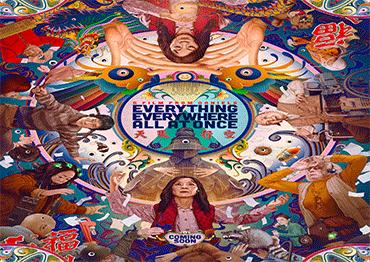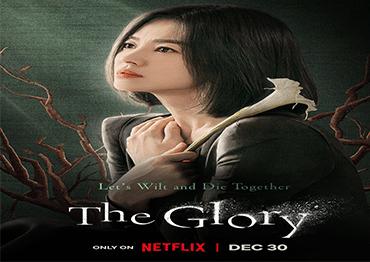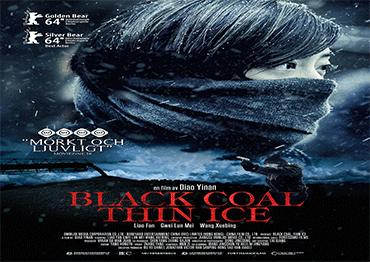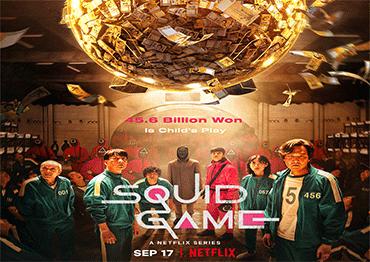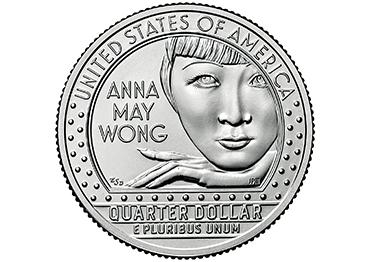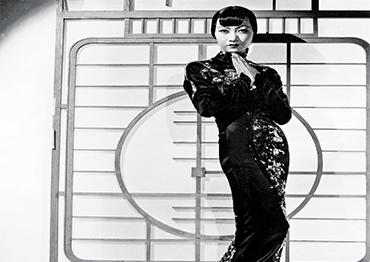For all the little boys and girls who look like me watching tonight, this is a beacon of hope and possibilities. This is proof that dreams dream big and dreams do come true!” Michelle Yeoh said after winning the Oscar for best actress in a leading role at the 95th Academy Awards, the first Asian to take home this honor.
In Everything Everywhere All at Once, Yeoh plays Evelyn Wang, a downtrodden middle-aged woman in an Asian community in the US, who struggles with her laundromat business and troubled relationships with her father, husband and teenage daughter. Suddenly her life is transformed when she finds herself traversing the multiverse, playing out different versions of her life. The science fiction action comedy had 11 nominations and scooped up seven Oscars in 2023, including Best Picture, Best Original Screenplay and Best Director for Daniel Kwan and Daniel Scheinert, Best Actress in a supporting role for Jamie Lee Curtis (with Stephanie Hsu also nominated), Best Supporting Actor for former child star Ke Huy Quan, Best Costume Design (Shirley Kurata), and Best Film Editing (Paul Rogers). It is the highest grossing film for A24, a leading indie film company in Hollywood.
The Malaysian-Chinese actress’ groundbreaking triumph came amid the growing popularity of Asian movies and TV shows, from rom-com Crazy Rich Asians, which also starred Yeoh, to Everything Everywhere All at Once and the Netflix comedy-drama series Beef, starring Ali Wong and Steven Yeun, whose 2021 movie Minari also won many accolades.
How have Asian actors managed to break the “bamboo ceiling,” and how have filmmakers of Chinese descent gained a solid footing in Hollywood, telling their own history and culture? Gui Lin, a professor at the University of Chinese Academy of Social Sciences, focuses her research on the aesthetics of literature and art, with papers on genre films. She was awarded for her literary criticism in 2022 by the China Literature and Art Critics Association and China Federation of Literary and Art Circles. Gui shared her insights on the development of Asian filmmaking in Hollywood with China News Service.
China News Service: Everything Everywhere All at Once won the award for Best Picture at the 95th Academy Awards. Why have Asian-themed movies become so popular in Western cinema?
Gui Lin: Everything Everywhere All at Once blends Hong Kong cinema’s comedy genre, Chinese family culture and a feminist subject, while borrowing from and collaging a large number of classic movies through post-modern art. It is exactly this unique combination that makes this movie a success.
Over recent years, Hollywood has seen the emergence of young filmmakers of Chinese descent such as [director of Turning Red] Domee Shi and Lulu Wang [director of The Farewell], most of whom studied filmmaking in the US. They are familiar with Hollywood film production and European and American film genres, and are able to leverage and build on their industry networks and resources. Based on this, they can incorporate their unique Chinese cultural experience and elements into their film production, thus bringing a new flavor to their films while ensuring their standard and quality.
Meanwhile, the Chinese-language movie market is becoming increasingly important to Hollywood. China’s movie market, one of the largest in the world, and audiences from the Chinese community in the US, are becoming major sources of revenue for Hollywood. In a bid to cater to Chinese-speaking audiences and adapt to market changes, Asian subjects are becoming an important choice for Hollywood. For example, The Farewell (2019), a small movie with a production cost of less than US$3 million, raked in US$20 million at the global box office. Online dramas produced by Netflix and the likes with Asian faces in leading roles, such as [South Korea’s] Squid Game (2021), The Glory (2022) and Beef (2023), have generated considerable revenue. This good market performance will motivate Hollywood to produce more Asian-themed movies.
CNS: How do you perceive the competitiveness of these movies in the Hollywood market?
GL: Over recent years, movies with Asian elements are becoming increasingly competitive in this market. The most crucial factor is China’s growing influence. In the past, some Hollywood movies were shot on location in China, or they featured some Chinese stars to attract the Chinese-language market, but they were little more than set-dressing. With China’s growing economic and cultural influence, movies and TV series about people of Chinese descent are tending to delve deeper into Chinese culture to meet the Western world’s curiosity about China. The Asian community’s growing social influence has also brought more opportunities to talented filmmakers of Chinese descent.
CNS: Many Asian-themed movies focus on emotional and cultural conflicts between overseas Chinese mothers and daughters. Why is that?
GL: Filmmakers of Chinese descent often present intergenerational conflicts and clashes among overseas Chinese families because of their own upbringing experiences. Cross-cultural conflicts between parents and children are particularly significant in Chinese immigrant families, so they have become a subject that these filmmakers are passionate about and are good at portraying. Furthermore, telling the story of a social minority from a female perspective, and presenting the real lives of overseas Chinese can also find resonance and trigger reactions among the audience.
For example, in Everything Everywhere All at Once, Michelle Yeoh plays a strong mother who is the center of her family. She travels through the multiverse to save her daughter, pushing their relationship to the center of the movie’s narrative. In fact, as women’s social status grows, female characters with strong personalities and power have emerged in films and TV productions both in China and the rest of the world. While Western movies often present these characters in a societal context, such as competition in the workplace, movies about overseas Chinese tend to focus on family relationships, which is very much in line with the Chinese culture’s emphasis on the family.
Different from previous Hollywood movies, Asian-themed movies are seeing less imagination and prejudice about the Chinese community, and more real representations of them. Filmmakers of Chinese descent are expressing their own state of life, in their own distinctive styles. They are redrawing the image of the Chinese community and re-rendering Chinese culture, which, to some extent, have changed Western filmmakers’ prejudices about Asian characters.
CNS: In the early 20th century, Chinese-American actress Anna May Wong frequently portrayed “dragon lady” characters in movies. What transformations have occurred in the image of Chinese women in Hollywood? And what factors contributed to these changes?
GL: For a long time, Asian faces in Hollywood movies were typecast into stereotypical roles. Wong, who was born in 1905, was considered the first Chinese-American actress in Hollywood. In an environment full of discrimination, she mostly played maliciously distorted, marginalized or sidekick roles, such as a tough “dragon lady” or demure “lotus flower.”
With the developing multiculturalism in the US, Hollywood movies are now featuring female Chinese characters that are increasingly rich and rounded, but overall, they are still part of the imagination, description and utilization of the East in a Western discourse, and the image is still different from real-life Chinese women.
In recent years, female Chinese roles in Hollywood movies have been mostly portrayed as strong mothers, such as those in Crazy Rich Asians and Everything Everywhere All at Once, who are domineering and controlling their families and labeled as “Asian tiger moms.” Through artistic exaggeration, these two comedies portrayed more vivid characters in a way that is closer to the real lives of Chinese immigrants and the real circumstances for their female members. In this way, such female Chinese characters are no longer “the other” created by Western filmmakers based on their imagination, but roles created close to themselves.
CNS: In a world of cultural diversity and globalization, what can filmmakers of Asian origin offer to the Asian community to help them find a place in the mainstream Hollywood narrative? How should Asians build their cultural image in Western mainstream culture?
GL: With wide emergence of filmmakers of Chinese descent in the West, there will definitely be more Chinese-themed movies with their perspectives. This can be illustrated by Chinese-language film director Ang Lee’s experiences in Hollywood.
His movies, such as Crouching Tiger, Hidden Dragon and Life of Pi, present Eastern culture to Western audiences. Even in his movies with traditional Western themes, such as Sense and Sensibility and Billy Lynn’s Long Halftime Walk, there are expressions of Eastern aesthetics and artistic atmospheres, which, to a certain extent, have changed the artistic and cultural landscape of the traditional European and American movie genres.
In fact, apart from movies, the emergence of Asian artists will bring about more artistic and cultural expressions from the Asian perspective, which will project their voices and enrich American mainstream culture. This is especially the case when there are works of high artistic quality.
CNS: Considering cultural differences, how do you think audiences in China can enhance their understanding of foreign films that depict Chinese characters and incorporate Chinese themes and elements?
GL: Chinese audiences often have difficulty in accepting overseas Chinese-themed movies produced in the West, which is a common problem faced by many cross-cultural artistic works.
There is a lot of cultural mix and collages in certain films made for the Western and global markets. For example, although Crouching Tiger, Hidden Dragon is a Chinese martial arts movie, it borrows images that are very familiar to Western audiences, such as heroes from Westerns and femmes fatales from film noir movies, in order to cater to their aesthetic preferences. The female protagonist Jen Yu’s Western-style pursuit of freedom and individualism reflects the collision and reconciliation between Eastern and Western cultures. The character’s deviation from the original novel and the movie’s Western-style dialogues might bring an odd feeling to audiences in China that are familiar with kung fu-themed artistic creations.
As for the polarized comments among audiences in China toward Hollywood Chinese-themed movies, I think there is no need to worry too much. On the one hand, with more and more movies reflecting much more of the real life of Chinese immigrants, there is growing acceptance among audiences in China of overseas Chinese-themed movies.
On the other hand, this can actually offer some inspiration for Chinese domestic filmmakers for their global drive. Cross-cultural filmmaking targeting the international market must be created in a way to ensure that the movie will be accepted and understood by international audiences who are less familiar with Chinese culture and China’s realities.
Learning from some Western movie genres and artistic expressions is a good way to do so. For example, Black Coal, Thin Ice, a movie directed by Diao Yinan, tells a Chinese story with the classic techniques of film noir, which helps Western audiences better place themselves in the reality of contemporary China and understand it on a gradual basis.
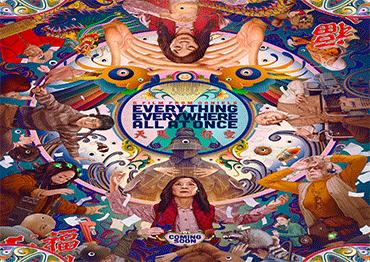
 Old Version
Old Version
